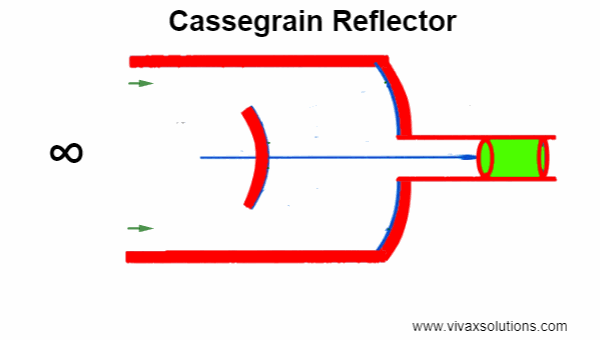Cassegrain reflector consists of a concave mirror, convex mirror and an eyepiece.
Parallel light from celestial objects enters the telescope. The large concave mirror, the primary reflector, is used to collect the light and bring it to a focus.
A secondary reflector, the convex reflector, is used to reflect the collecting light out through a hole in the primary parabolic mirror.
The repeatedly-reflected light then enters an eyepiece.
The primary mirror, in reality, is a parabolic mirror rather than a concave mirror. The purpose is to minimize the optical defect, spherical aberration of light, when reflected at the edges of a large mirror.
The largest telescopes are reflectors. Since they have a large primary mirror, they can collect large amount of light from distant objects. In addition, the use of mirrors reduces the loss of light at refracting surfaces of the lenses. In addition, mirrors do not suffer from chromatic aberration associated with lenses that turn an image into blurry coloured image.
Unlike lenses, the mirrors can be mounted on strong structures without damaging them. When lenses are used for the same purpose, the edges get damaged easily due to the fragile nature of the substances of the mirror.






0 comments:
Post a Comment